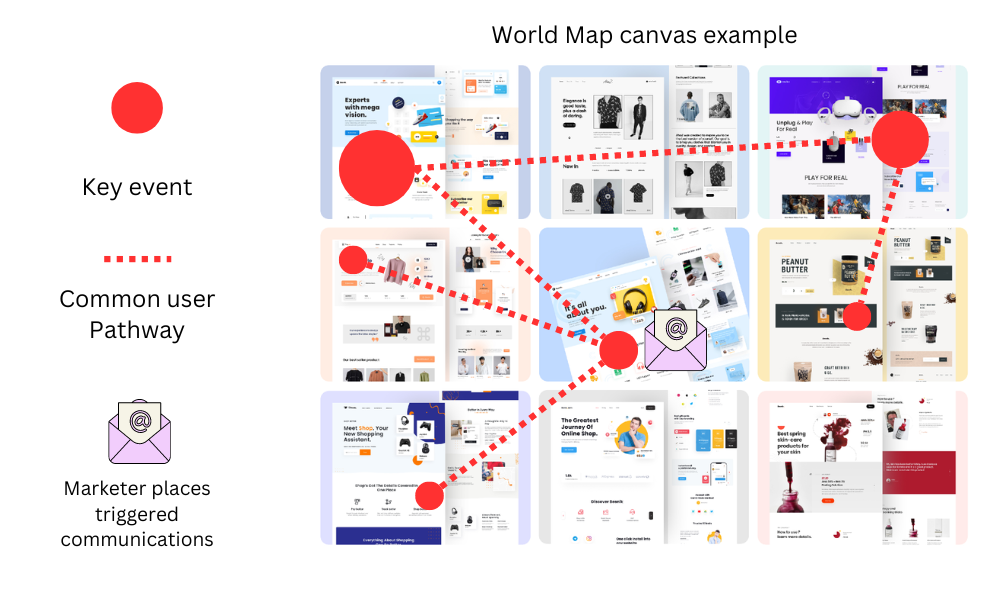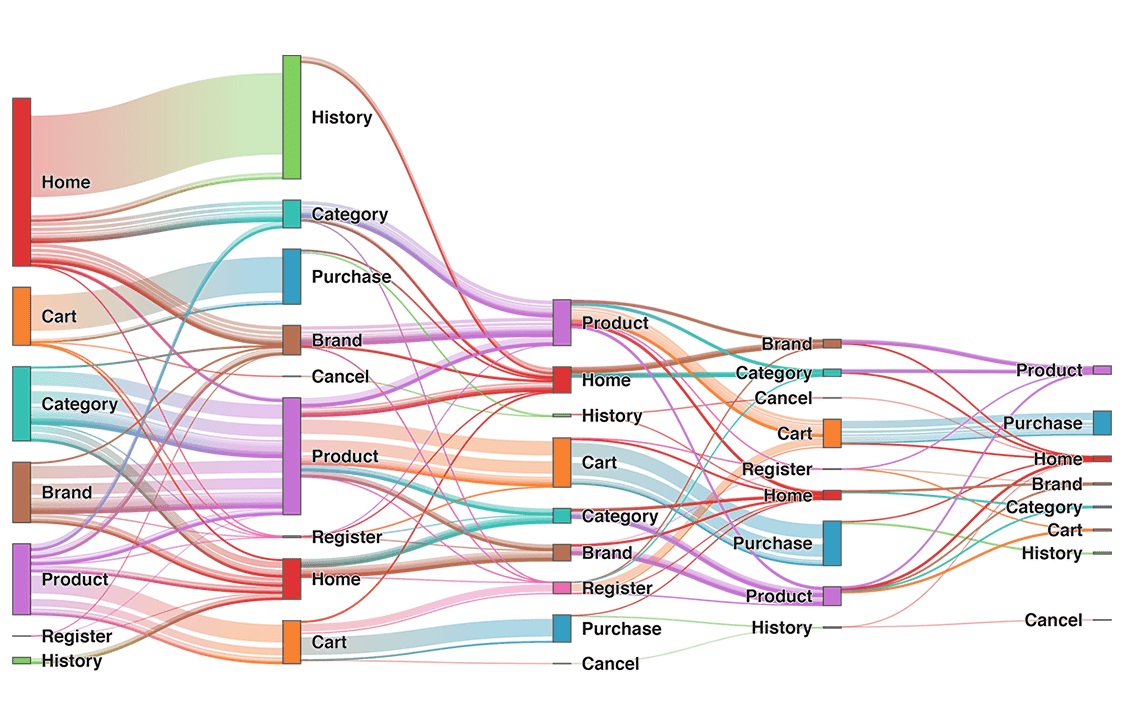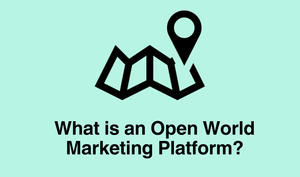The Open World Marketing platform is a conceptual marketing platform that creates a digital world of a brand in the form of a world map.
What is the current experience that customers are going through in 2024?
Customers are being targeted through digital and 1:1 channels such as email communications, push notifications, owned media, and social media through isolated campaign driven communications.
Instead of brands understanding their audiences and building a relationship through a series of meaningful communications with people, marketers use isolated temporary targeted campaigns to drive forward the same information their target already knows. This is designed to put their brand and product front of mind and encourage the user to purchase.
While this can work as a sales tactic, these communications are often completely irrelevant to the person's current needs, goals and shopping behaviours. These campaigns ignore the history or intent of the person causing the person to leave with a negative view of the brand.
The problem the OWMP is trying to solve is:
Marketers are designing and sending targeted campaigns in isolation of a users broader experience due to their limited visibility on users behaviour. This results in isolated, independent and irrelevant communications to the user.
How the OWMP solves this problem:
The OWMP creates a birds-eye view of the brand's digital touch-points (open world map), visualises the user traffic and then enables unique triggered communications based on where in the world the user interacts.
How does an OWMP work?
An Open World Marketing Platform creates a map of a brand ecosystem and then creates communication triggers based on people's interactions. The platform uses a digital canvas which is the 'world' the user engages with.
Once the world is created in the platform, it's a lot easier to understand the users intent across different products, websites, app, social media and other touch points. Instead of looking at singular touchpoints in isolation, it provides marketers with a big picture view of how users engage with the brand and then creates meaningful interactions.
The map allows to view customer traffic, so instead of marketers needing to guess the intention of users based on one trigger, they can focus on common experiences, questions and unique pathways of their users.
An Open World Marketing platform works through 4 x key areas:
- Creating a digital world map of the entire brand (websites, app, social media and physical locations).
- Visualisation of customer volumes and the different pathways.
- Tagging the map with key events that indicate the different areas of intent and purpose.
- Triggered communications scheduled based on that behaviour.
The Open World Marketing platform creates the world, shows the paths customers take and then the marketer makes decisions on how communications should compliment that world.
How is a OWMP different to marketing automation platforms (MAPs)?
There's a few limitations with current marketing automation platforms:
- Journeys are designed with single entry criteria. They ignore the user's intent and bigger picture.
- Journeys are designed as linear, sequential communications. They don't consider if a user triggers another journey or heads a different direction.
- Journeys are based on pre-defined strategies and triggers. These strategies often don't correspond with the volumes or pathways users take.
- They require memorisation and analytics to check entry criteria and events, opposed to having it clearly visualised on a map.
For more information we have a playbook on MAP basics here.
Does such a platform exist? What needs to happen to create this?
This platform is a concept and works on 4 x new components to work together.
The world map canvas
A canvas will need to be able to extract and display all of an organisations website site maps, HTML, apps, as well as relevant in-store data points. It will also need to be updated regularly to reflect any changes made in the organisations digital ecosystem.
Conversion APIs may be able to help with any off-platform touchpoints.

Visualisation of customer pathways
Once the map is finalised, it is overlayed with traffic to indicate the most common engagements and pathways a user takes.
This requires tagging across the entire world map so ensure that any user action is captured and visualised.
The below example is a traffic sankey graph that would be overlayed on the world map.

Identifying and creating triggered communications
Once the map and traffic visualisations are ready, marketers can then maintain the world map and observe how user pathways engage with the brand.
Marketers and digital professionals would be responsible for:
- Updating the map with any new updates or digital assets
- Monitoring the user pathways, experiences and update any relevant tagging
- Identify opportunities and develop communications strategies based on the map and pathways
- Design and build triggered communications at various points in the map
What potential does OWMPs have more broadly?
The OWMP would be the foundation for an organisations data, marketing and communication strategy.
However, the potential this platform has doesn't stop at the walls of a single organisation.
If all organisations had a OWMP, that would allow for cross-journey stitching across world maps.
For example, let's say a user is currently interested in surfing and has been browsing across both surfboard retailers as well as a separate wetsuit retailer. Both organisations have stitched their open world marketing platforms. The platform identifies this cross over and creates a compelling partnership offer to users who need both a surfboard and a wetsuit.
This type of future is only possible with standardised technologies such as an Open World Marketing Platform.
What's the next step?
This is an exciting new concept for marketing technology platforms and has the potential to be the framework that technologies can use and integrate with.
Over the next few months we'll explore prototype designs including UI, UX and break down the different components to their technical requirements.
Have feedback or interested in collaborating? Feel free to get in touch.


